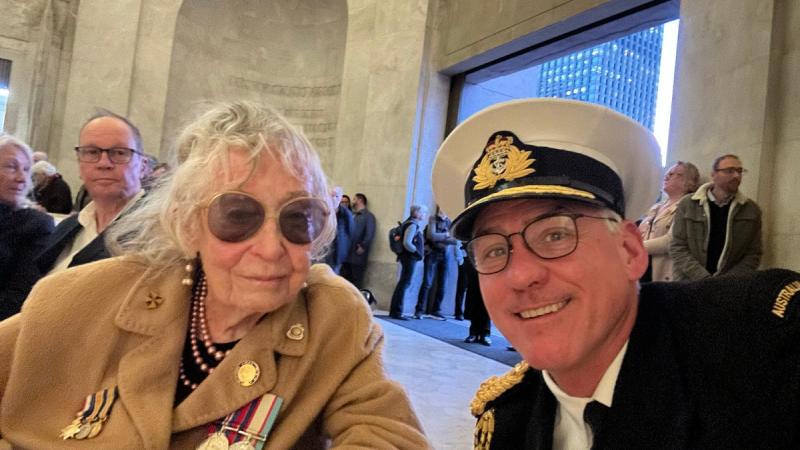22 April 2021

Director of Australian War Graves Brigadier Paul Nothard has a deeply rooted connection to Australia’s military history, with many members of his family having served in the military at various times.
Serving on multiple operational deployments taught Brigadier Nothard what sacrifice means, and he remains deeply passionate about the Department of Veterans’ Affairs focus on the respect and recognition of those who died serving their country.
“For those who made the ultimate sacrifice, the program of official commemorations delivers on a solemn promise made in 1917, with the formation of the Imperial War Graves Commission, now the Commonwealth War Graves Commission (CWGC), to mark the graves of the fallen and to care for them in perpetuity,” Brigadier Nothard said.
“On November 11, 1949, Admiral Sir Martin Dunbar-Nasmith VC delivered the CWGC Vice-Chairman’s Remembrance Day Broadcast.
“Sir Dunbar-Nasmith provided an update on the work of the CWGC in constructing new war cemeteries and rebuilding First World War cemeteries that were damaged in battles during the Second World War.
“The scale of the Second World War added to the breadth of the CWGC’s work.
“Sir Dunbar-Nasmith wrote of the enormity of the challenge in marking the graves of our war dead ‘from above the Arctic Circle, in the deserts and swamps, in tropical jungles and among the more familiar surroundings of orchard, field and woodland’.”
The CWGC went about its work diligently in France, Germany, Norway, Greece, Africa, Italy, Burma and Malaya (and many other places), taking the view that it was a privilege to mark every grave with a headstone, arrange for its care and upkeep and ensure it would never be disturbed.
Today, in Australia, in almost every cemetery in the country, the work of caring for and maintaining war graves is carried out by the Office of Australian War Graves (OAWG) within DVA.
In total, the OAWG cares for and maintains 75 CWGC war cemeteries and war plots throughout Australia, Papua New Guinea and the Solomon Islands.
The largest is the Bomana War Cemetery in Port Moresby, which contains more Australian graves than any other cemetery in the world.
It contains the burials of 3824 Commonwealth service personnel from World War II and records the names of a further 750 on the Port Moresby Memorial to the Missing, for those who have no known graves.
In total, OAWG cares for the graves and official commemorations of 13,480 service personnel from Commonwealth nations who served, died and were commemorated in Australia during the two world wars.
Additionally, OAWG cares for the official commemoration of more than 323,000 Australian service personnel from all wars and conflicts who died during or as a result of their war service, in more than 2330 locations throughout Australia.
When asked why it was important to build memorials to our fallen veterans, Brigadier Nothard reflected on Sir Dunbar-Nasmith’s words of 1949: “I can only ask in reply: Is it thinkable that our [veterans’] graves, lying scattered over the face of the Earth, should be left unmarked and neglected? And if we believe the sacrifice of all was equal, is it right that those whose graves are lost, should remain unhonoured and uncommemorated?”


